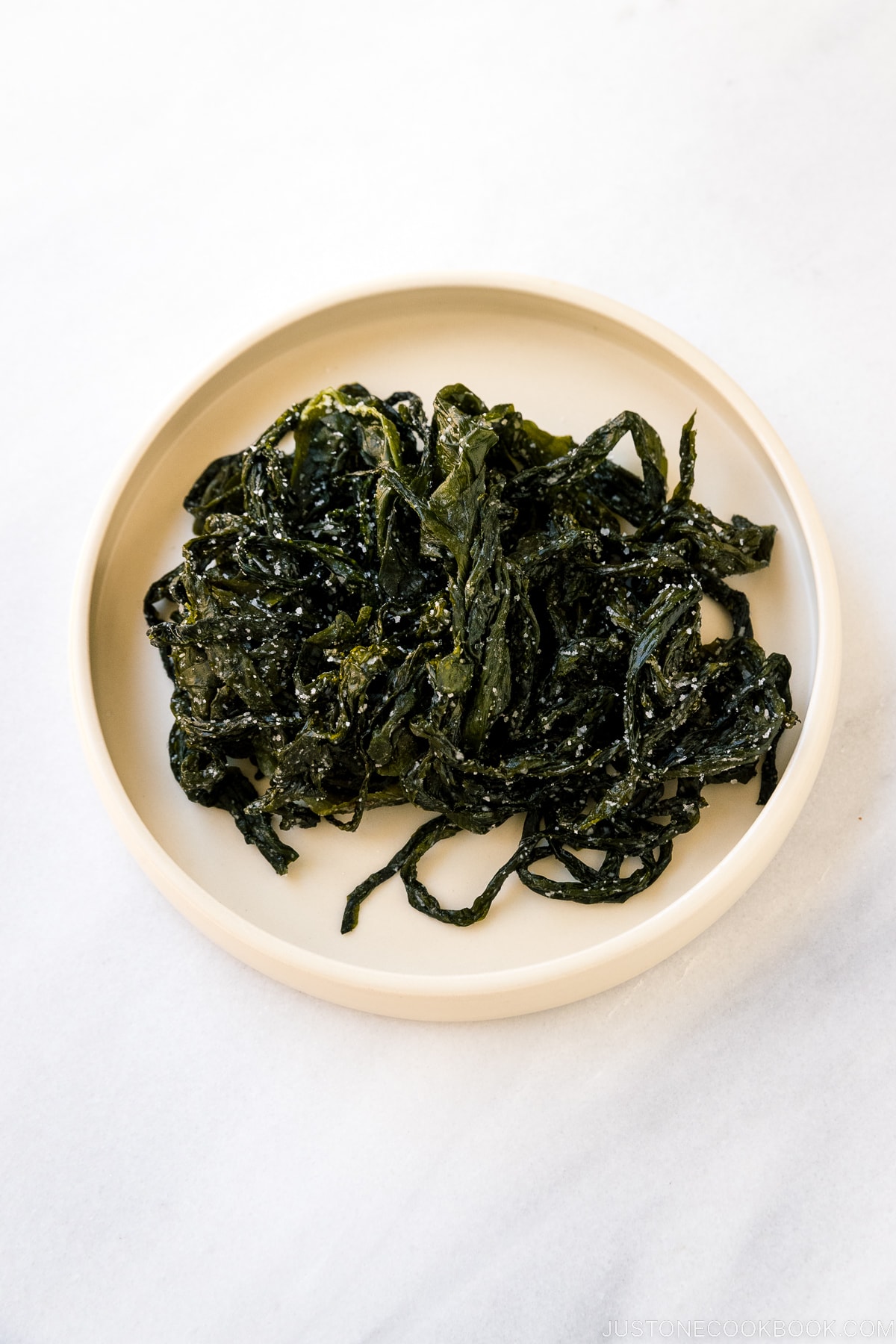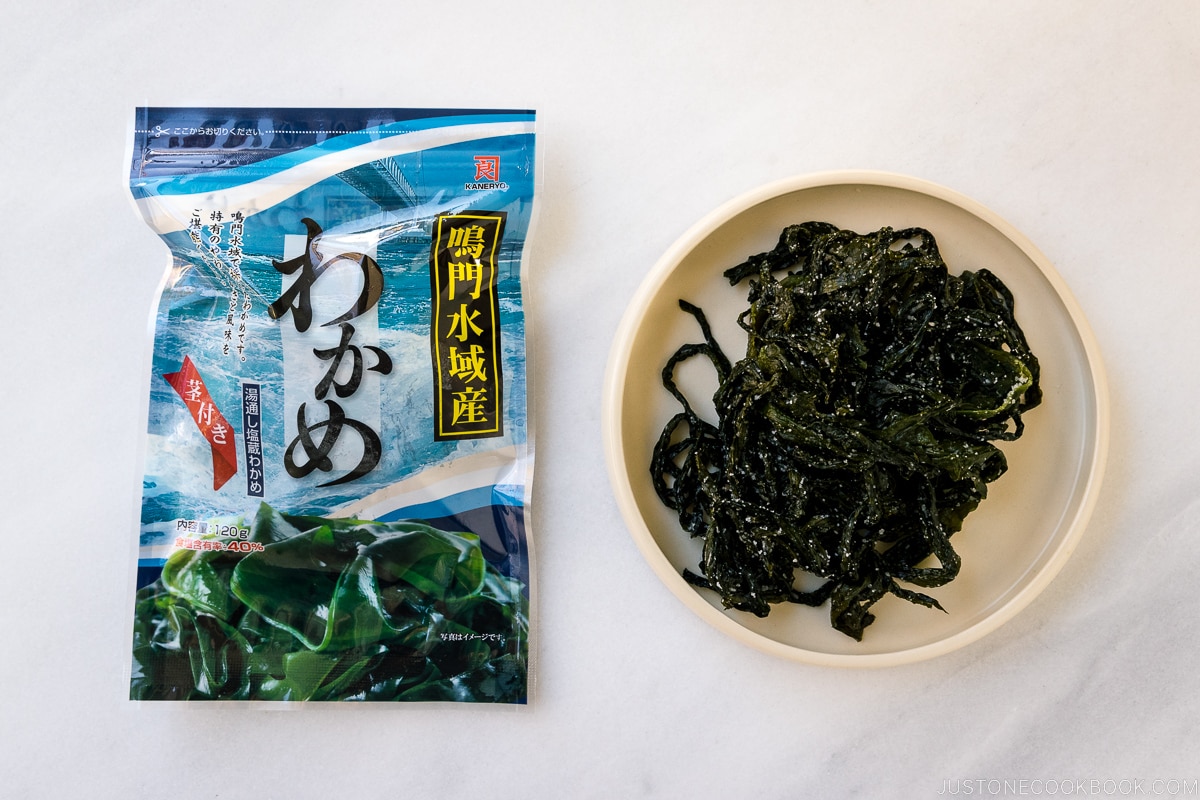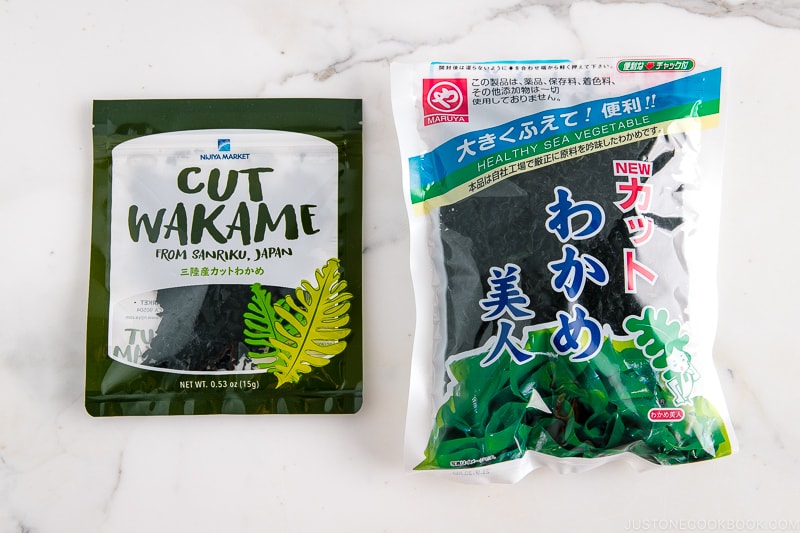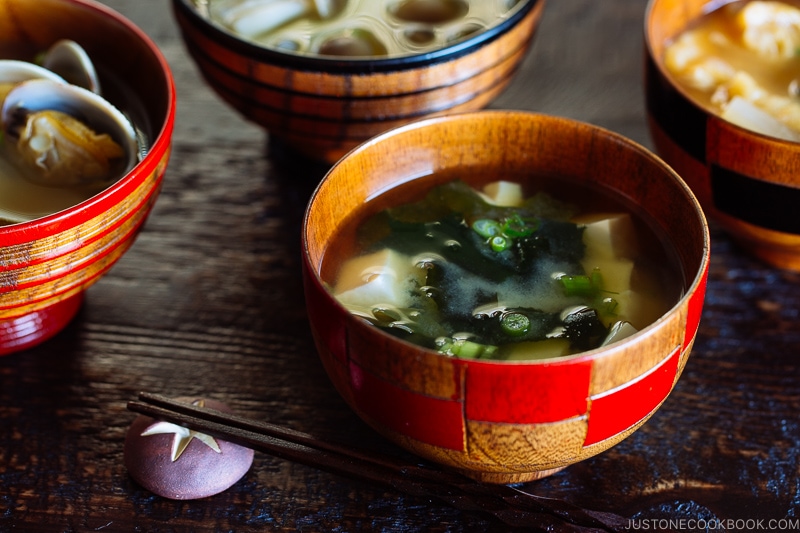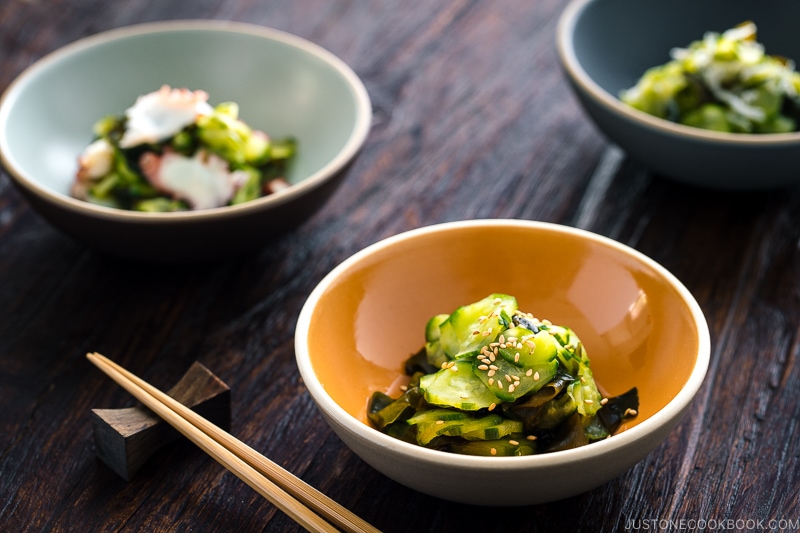Wakame (わかめ・若布) is a type of edible seaweed. It is commonly used in miso soup, tofu salad, and side dishes such as sunomono. It’s a nutrient-dense sea vegetable cultivated in Japan and Korea for centuries.
What Is Wakame
Grown in cool and mineral-rich arctic currents, wakame (undaria pinnatifida) has been harvested in Japan for generations since the Nara period (710-794). The green or brown algae can be called “sea mustard” due to its resemblance to cooked mustard greens. It’s more sustainable than wild harvesting and can protect reefs from storms and filter pollutants from seawater.
What Does It Taste Like
It has a briny, subtly sweet, and umami flavor. The texture can be described as silky, satiny, and slightly rubbery.
How To Use
Outside of Japan, you will most likely find dried or salted wakame. As dried and salted wakame is high in sodium, you must soak it in water before use. As it expands when reconstituted, you may want to start with a pinch of wakame and see how much you need. You can find fresh wakame in Japan year-round.
Where To Buy
Fresh wakame may be difficult to find outside Japan, but it is kept in the refrigerated section.
How To Choose The Best
Check the label when buying it. You can find dried and salted wakame imported from Japan.
How To Store
Store opened or unopened dried wakame in your pantry or anywhere with low humidity. Make sure to seal opened packets of wakame properly. You can also store rehydrated wakame in the fridge. Store salted or fresh wakame in the refrigerator. While salted wakame has a more extended expiration date, consume fresh wakame within a few days.
Substitutions
Depending on the dish, you may be able to replace wakame with other types of seaweed.
Health Benefits
Surprisingly, there are lots of health benefits of wakame. It’s rich in minerals such as manganese, folate, magnesium, and calcium. It also contains vitamins A, C, E, and K, as well as iron, copper, and phosphorus. Wakame seaweed is also a great plant-based source of omega-3 fatty acids essential for health and well-being.
May help manage body weight
A study on obese mice found that fucoxanthin, a compound in wakame, may promote weight loss and prevent diabetes by promoting fat burning within the fat cells.
May prevent hypothyroidism
Iodine is essential to thyroid function and the production of thyroid hormones, which help support growth, metabolism, protein synthesis, and cell repair. It’s one of the highest foods containing iodine, and consuming wakame can prevent hypothyroidism, a condition triggered by iodine deficiency.
Manage cholesterol and high blood pressure
It also can lower cholesterol and high blood pressure. Although there is limited research on humans, animal studies show that it may play a role in cholesterol management and heart health.
Improve skin conditions
The antioxidants in wakame may help to rejuvenate, moisturize, and improve your skin health.
Recipes Using Wakame
Q: How do I rehydrate dried wakame?
To rehydrate wakame, submerge it in water for 5-10 minutes, squeeze it out, and it’s ready to use! If it still tastes salty, submerge it in clean water and repeat. Dried wakame expands a lot, so start with a pinch or two.
Q: What are the differences between wakame, kombu, nori, and other types of seaweed?
Please read Discover Seaweed: The Essential Ingredient of the Japanese Diet about the different types of seaweed. Wish to learn more about Japanese cooking? Sign up for our free newsletter to receive cooking tips & recipe updates! And stay in touch with me on Facebook, Pinterest, YouTube, and Instagram.

